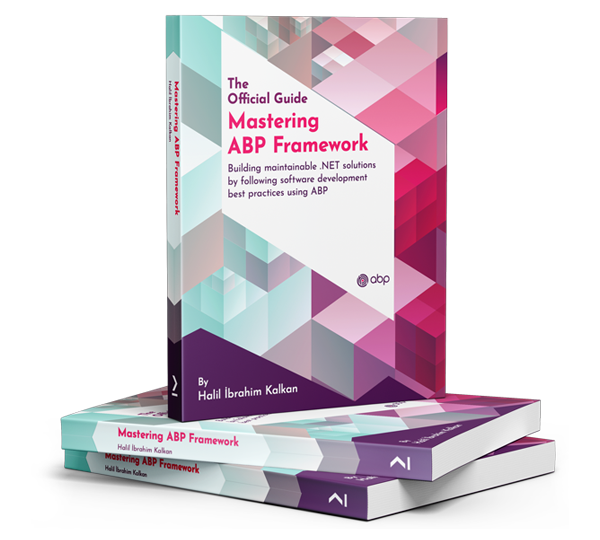Should we upgrade to abp 8.2.1 or just the nuget packages?
Videos of tenant link issues.
https://1drv.ms/v/s!AseK7NI9P0MAgc5WgkCbI4qhQYVOjA?e=Sd1cFo
https://1drv.ms/v/s!AseK7NI9P0MAgc5Y6uPnBLmclDoRhQ?e=MJKijc
Looks like that worked :)
We need to do a bit more integration testing to know for sure though.
We don't have an auth server project. Only the Blazor and Blazor.Client projects.
When user uses linked account to login to admin tenant from regular tenant the application crashes and logs out
When user login and logout of the application, and attempt to login as a tenant, user cannot see the "Login with this tenant" element under the action button
Steps to reproduce:
We have video for reference if we can upload it somewhere.
When user login the second time, they cannot see the Tenant logins / linked accounts and Authority delegation
Steps to reproduce:
Module._mono_wasm_invoke_method_bound @ dotnet.native.8.0.7.37dkch2d2y.js:8 kr @ invoke-cs.ts:273 l.javaScriptExports.call_entry_point @ managed-exports.ts:60 Oc @ run.ts:44 callEntryPoint @ blazor.web.js:1 ti @ blazor.web.js:1 await in ti (async) ei @ blazor.web.js:1 startWebAssemblyIfNotStarted @ blazor.web.js:1 resolveRendererIdForDescriptor @ blazor.web.js:1 determinePendingOperation @ blazor.web.js:1 refreshRootComponents @ blazor.web.js:1 (anonymous) @ blazor.web.js:1 setTimeout (async) rootComponentsMayRequireRefresh @ blazor.web.js:1 startLoadingWebAssemblyIfNotStarted @ blazor.web.js:1 blazor.web.js:1 (null) Ar @ blazor.web.js:1 put_char @ dotnet.native.8.0.7.37dkch2d2y.js:8 write @ dotnet.native.8.0.7.37dkch2d2y.js:8 write @ dotnet.native.8.0.7.37dkch2d2y.js:8 doWritev @ dotnet.native.8.0.7.37dkch2d2y.js:8 _fd_write @ dotnet.native.8.0.7.37dkch2d2y.js:8 $func8373 @ 00b21cf6:0x1fb6ce $func8502 @ 00b21cf6:0x20351d $func8512 @ 00b21cf6:0x204f1f $func8377 @ 00b21cf6:0x1fbb05 $func1673 @ 00b21cf6:0x8dafb $func3199 @ 00b21cf6:0xe985a $func3201 @ 00b21cf6:0xe98c0 $func3353 @ 00b21cf6:0xf7efe $func345 @ 00b21cf6:0x1f705 $func240 @ 00b21cf6:0x1ba5f $func238 @ 00b21cf6:0x1b7c3 $func272 @ 00b21cf6:0x1d1bd $func3185 @ 00b21cf6:0xe8756 $func2505 @ 00b21cf6:0xbe4ac $func2511 @ 00b21cf6:0xbecd0 $func2535 @ 00b21cf6:0xc1327 $mono_wasm_invoke_method_bound @ 00b21cf6:0xa4fa Module._mono_wasm_invoke_method_bound @ dotnet.native.8.0.7.37dkch2d2y.js:8 kr @ invoke-cs.ts:273 l.javaScriptExports.complete_task @ managed-exports.ts:142 (anonymous) @ marshal-to-cs.ts:335 Promise.then (async) mo @ marshal-to-cs.ts:329 (anonymous) @ marshal-to-cs.ts:83 (anonymous) @ invoke-js.ts:236 Tl @ invoke-js.ts:276 $func349 @ 00b21cf6:0x1fafb $func245 @ 00b21cf6:0x1bf9f $func238 @ 00b21cf6:0xf16c $func272 @ 00b21cf6:0x1d1bd $func3185 @ 00b21cf6:0xe8756 $func2505 @ 00b21cf6:0xbe4ac $func2511 @ 00b21cf6:0xbecd0 $func2535 @ 00b21cf6:0xc1327 $mono_wasm_invoke_method_bound @ 00b21cf6:0xa4fa Module._mono_wasm_invoke_method_bound @ dotnet.native.8.0.7.37dkch2d2y.js:8 kr @ invoke-cs.ts:273 l.javaScriptExports.complete_task @ managed-exports.ts:142 (anonymous) @ marshal-to-cs.ts:335 Promise.then (async) mo @ marshal-to-cs.ts:329 (anonymous) @ marshal-to-cs.ts:83 (anonymous) @ invoke-js.ts:177 Tl @ invoke-js.ts:276 $func349 @ 00b21cf6:0x1fafb $func245 @ 00b21cf6:0x1bf9f $func238 @ 00b21cf6:0xf16c $func272 @ 00b21cf6:0x1d1bd $func3185 @ 00b21cf6:0xe8756 $func2505 @ 00b21cf6:0xbe4ac $func2511 @ 00b21cf6:0xbecd0 $func2535 @ 00b21cf6:0xc1327 $mono_wasm_invoke_method_bound @ 00b21cf6:0xa4fa Module._mono_wasm_invoke_method_bound @ dotnet.native.8.0.7.37dkch2d2y.js:8 kr @ invoke-cs.ts:273 l.javaScriptExports.complete_task @ managed-exports.ts:142 (anonymous) @ marshal-to-cs.ts:335 Promise.then (async) mo @ marshal-to-cs.ts:329 (anonymous) @ marshal-to-cs.ts:83 (anonymous) @ invoke-js.ts:177 Tl @ invoke-js.ts:276 $func349 @ 00b21cf6:0x1fafb $func245 @ 00b21cf6:0x1bf9f $func238 @ 00b21cf6:0xf16c $func272 @ 00b21cf6:0x1d1bd $func3185 @ 00b21cf6:0xe8756 $func2505 @ 00b21cf6:0xbe4ac $func2511 @ 00b21cf6:0xbecd0 $func2535 @ 00b21cf6:0xc1327 $mono_wasm_invoke_method_bound @ 00b21cf6:0xa4fa Module._mono_wasm_invoke_method_bound @ dotnet.native.8.0.7.37dkch2d2y.js:8 kr @ invoke-cs.ts:273 l.javaScriptExports.complete_task @ managed-exports.ts:142 (anonymous) @ marshal-to-cs.ts:335 Promise.then (async) mo @ marshal-to-cs.ts:329 (anonymous) @ marshal-to-cs.ts:83 (anonymous) @ invoke-js.ts:236 Tl @ invoke-js.ts:276 $func349 @ 00b21cf6:0x1fafb $func245 @ 00b21cf6:0x1bf9f $func238 @ 00b21cf6:0xf16c $func272 @ 00b21cf6:0x1d1bd $func3185 @ 00b21cf6:0xe8756 $func2505 @ 00b21cf6:0xbe4ac $func2511 @ 00b21cf6:0xbecd0 $func2535 @ 00b21cf6:0xc1327 $mono_wasm_invoke_method_bound @ 00b21cf6:0xa4fa Module._mono_wasm_invoke_method_bound @ dotnet.native.8.0.7.37dkch2d2y.js:8 kr @ invoke-cs.ts:273 (anonymous) @ invoke-cs.ts:184 endInvokeJSFromDotNet @ blazor.web.js:1 (anonymous) @ blazor.web.js:1 Promise.then (async) beginInvokeJSFromDotNet @ blazor.web.js:1 ri @ blazor.web.js:1 (anonymous) @ invoke-js.ts:233 Tl @ invoke-js.ts:276 $func349 @ 00b21cf6:0x1fafb $func245 @ 00b21cf6:0x1bf9f $func238 @ 00b21cf6:0xf16c $func272 @ 00b21cf6:0x1d1bd $func3185 @ 00b21cf6:0xe8756 $func2505 @ 00b21cf6:0xbe4ac $func2511 @ 00b21cf6:0xbecd0 $func2535 @ 00b21cf6:0xc1327 $mono_wasm_invoke_method_bound @ 00b21cf6:0xa4fa Module._mono_wasm_invoke_method_bound @ dotnet.native.8.0.7.37dkch2d2y.js:8 kr @ invoke-cs.ts:273 l.javaScriptExports.complete_task @ managed-exports.ts:142 (anonymous) @ marshal-to-cs.ts:335 Promise.then (async) mo @ marshal-to-cs.ts:329 (anonymous) @ marshal-to-cs.ts:83 (anonymous) @ invoke-js.ts:177 Tl @ invoke-js.ts:276 $func349 @ 00b21cf6:0x1fafb $func245 @ 00b21cf6:0x1bf9f $func238 @ 00b21cf6:0xf16c $func272 @ 00b21cf6:0x1d1bd $func3185 @ 00b21cf6:0xe8756 $func2505 @ 00b21cf6:0xbe4ac $func2511 @ 00b21cf6:0xbecd0 $func2535 @ 00b21cf6:0xc1327 $mono_wasm_invoke_method_bound @ 00b21cf6:0xa4fa Module._mono_wasm_invoke_method_bound @ dotnet.native.8.0.7.37dkch2d2y.js:8 kr @ invoke-cs.ts:273 l.javaScriptExports.complete_task @ managed-exports.ts:142 (anonymous) @ marshal-to-cs.ts:335 Promise.then (async) mo @ marshal-to-cs.ts:329 (anonymous) @ marshal-to-cs.ts:83 (anonymous) @ invoke-js.ts:236 Tl @ invoke-js.ts:276 $func349 @ 00b21cf6:0x1fafb $func245 @ 00b21cf6:0x1bf9f $func238 @ 00b21cf6:0xf16c $func272 @ 00b21cf6:0x1d1bd $func3185 @ 00b21cf6:0xe8756 $func2505 @ 00b21cf6:0xbe4ac $func2511 @ 00b21cf6:0xbecd0 $func2535 @ 00b21cf6:0xc1327 $mono_wasm_invoke_method_bound @ 00b21cf6:0xa4fa Module._mono_wasm_invoke_method_bound @ dotnet.native.8.0.7.37dkch2d2y.js:8 kr @ invoke-cs.ts:273 (anonymous) @ invoke-cs.ts:184 endInvokeJSFromDotNet @ blazor.web.js:1 (anonymous) @ blazor.web.js:1 Promise.then (async) beginInvokeJSFromDotNet @ blazor.web.js:1 ri @ blazor.web.js:1 (anonymous) @ invoke-js.ts:233 Tl @ invoke-js.ts:276 $func349 @ 00b21cf6:0x1fafb $func245 @ 00b21cf6:0x1bf9f $func238 @ 00b21cf6:0xf16c $func272 @ 00b21cf6:0x1d1bd $func3185 @ 00b21cf6:0xe8756 $func2505 @ 00b21cf6:0xbe4ac $func2504 @ 00b21cf6:0xbe43c $func1874 @ 00b21cf6:0x9a502 $func349 @ 00b21cf6:0x1fb7f $func245 @ 00b21cf6:0x1bf9f $func238 @ 00b21cf6:0xf16c $func272 @ 00b21cf6:0x1d1bd $func3185 @ 00b21cf6:0xe8756 $func2505 @ 00b21cf6:0xbe4ac $func2511 @ 00b21cf6:0xbecd0 $func2535 @ 00b21cf6:0xc1327 $mono_wasm_invoke_method_bound @ 00b21cf6:0xa4fa Module._mono_wasm_invoke_method_bound @ dotnet.native.8.0.7.37dkch2d2y.js:8 kr @ invoke-cs.ts:273 l.javaScriptExports.call_entry_point @ managed-exports.ts:60 Oc @ run.ts:44 callEntryPoint @ blazor.web.js:1 ti @ blazor.web.js:1 await in ti (async) ei @ blazor.web.js:1 startWebAssemblyIfNotStarted @ blazor.web.js:1 resolveRendererIdForDescriptor @ blazor.web.js:1 determinePendingOperation @ blazor.web.js:1 refreshRootComponents @ blazor.web.js:1 (anonymous) @ blazor.web.js:1 setTimeout (async) rootComponentsMayRequireRefresh @ blazor.web.js:1 startLoadingWebAssemblyIfNotStarted @ blazor.web.js:1 {0}.app.localhost:44399/api/account/profile-picture-file/d3a58a5b-0605-02eb-49f4-3a13b6093bbf:1
GET https://{0}.app.localhost:44399/api/account/profile-picture-file/d3a58a5b-0605-02eb-49f4-3a13b6093bbf net::ERR_NAME_NOT_RESOLVED
Image (async) setOrRemoveAttributeOrProperty @ blazor.web.js:1 applyAttribute @ blazor.web.js:1 insertElement @ blazor.web.js:1 insertFrame @ blazor.web.js:1 insertFrameRange @ blazor.web.js:1 insertElement @ blazor.web.js:1 insertFrame @ blazor.web.js:1 insertFrameRange @ blazor.web.js:1 insertElement @ blazor.web.js:1 insertFrame @ blazor.web.js:1 insertFrameRange @ blazor.web.js:1 insertElement @ blazor.web.js:1 insertFrame @ blazor.web.js:1 insertFrameRange @ blazor.web.js:1 insertElement @ blazor.web.js:1 insertFrame @ blazor.web.js:1 insertFrameRange @ blazor.web.js:1 insertElement @ blazor.web.js:1 insertFrame @ blazor.web.js:1 applyEdits @ blazor.web.js:1 updateComponent @ blazor.web.js:1 xe @ blazor.web.js:1 yt._internal.renderBatch @ blazor.web.js:1 (anonymous) @ invoke-js.ts:201 Tl @ invoke-js.ts:276 $func349 @ 00b21cf6:0x1fafb $func245 @ 00b21cf6:0x1bf9f $func238 @ 00b21cf6:0xf16c $func272 @ 00b21cf6:0x1d1bd $func3185 @ 00b21cf6:0xe8756 $func2505 @ 00b21cf6:0xbe4ac $func2511 @ 00b21cf6:0xbecd0 $func2535 @ 00b21cf6:0xc1327 $mono_wasm_invoke_method_bound @ 00b21cf6:0xa4fa Module._mono_wasm_invoke_method_bound @ dotnet.native.8.0.7.37dkch2d2y.js:8 kr @ invoke-cs.ts:273 l.javaScriptExports.complete_task @ managed-exports.ts:142 (anonymous) @ marshal-to-cs.ts:335 Promise.then (async) mo @ marshal-to-cs.ts:329 (anonymous) @ marshal-to-cs.ts:83 (anonymous) @ invoke-js.ts:236 Tl @ invoke-js.ts:276 $func349 @ 00b21cf6:0x1fafb $func245 @ 00b21cf6:0x1bf9f $func238 @ 00b21cf6:0xf16c $func272 @ 00b21cf6:0x1d1bd $func3185 @ 00b21cf6:0xe8756 $func2505 @ 00b21cf6:0xbe4ac $func2511 @ 00b21cf6:0xbecd0 $func2535 @ 00b21cf6:0xc1327 $mono_wasm_invoke_method_bound @ 00b21cf6:0xa4fa Module._mono_wasm_invoke_method_bound @ dotnet.native.8.0.7.37dkch2d2y.js:8 kr @ invoke-cs.ts:273 l.javaScriptExports.complete_task @ managed-exports.ts:142 (anonymous) @ marshal-to-cs.ts:335 Promise.then (async) mo @ marshal-to-cs.ts:329 (anonymous) @ marshal-to-cs.ts:83 (anonymous) @ invoke-js.ts:177 Tl @ invoke-js.ts:276 $func349 @ 00b21cf6:0x1fafb $func245 @ 00b21cf6:0x1bf9f $func238 @ 00b21cf6:0xf16c $func272 @ 00b21cf6:0x1d1bd $func3185 @ 00b21cf6:0xe8756 $func2505 @ 00b21cf6:0xbe4ac $func2511 @ 00b21cf6:0xbecd0 $func2535 @ 00b21cf6:0xc1327 $mono_wasm_invoke_method_bound @ 00b21cf6:0xa4fa Module._mono_wasm_invoke_method_bound @ dotnet.native.8.0.7.37dkch2d2y.js:8 kr @ invoke-cs.ts:273 l.javaScriptExports.complete_task @ managed-exports.ts:142 (anonymous) @ marshal-to-cs.ts:335 Promise.then (async) mo @ marshal-to-cs.ts:329 (anonymous) @ marshal-to-cs.ts:83 (anonymous) @ invoke-js.ts:177 Tl @ invoke-js.ts:276 $func349 @ 00b21cf6:0x1fafb $func245 @ 00b21cf6:0x1bf9f $func238 @ 00b21cf6:0xf16c $func272 @ 00b21cf6:0x1d1bd $func3185 @ 00b21cf6:0xe8756 $func2505 @ 00b21cf6:0xbe4ac $func2511 @ 00b21cf6:0xbecd0 $func2535 @ 00b21cf6:0xc1327 $mono_wasm_invoke_method_bound @ 00b21cf6:0xa4fa Module._mono_wasm_invoke_method_bound @ dotnet.native.8.0.7.37dkch2d2y.js:8 kr @ invoke-cs.ts:273 l.javaScriptExports.complete_task @ managed-exports.ts:142 (anonymous) @ marshal-to-cs.ts:335 Promise.then (async) mo @ marshal-to-cs.ts:329 (anonymous) @ marshal-to-cs.ts:83 (anonymous) @ invoke-js.ts:236 Tl @ invoke-js.ts:276 $func349 @ 00b21cf6:0x1fafb $func245 @ 00b21cf6:0x1bf9f $func238 @ 00b21cf6:0xf16c $func272 @ 00b21cf6:0x1d1bd $func3185 @ 00b21cf6:0xe8756 $func2505 @ 00b21cf6:0xbe4ac $func2511 @ 00b21cf6:0xbecd0 $func2535 @ 00b21cf6:0xc1327 $mono_wasm_invoke_method_bound @ 00b21cf6:0xa4fa Module._mono_wasm_invoke_method_bound @ dotnet.native.8.0.7.37dkch2d2y.js:8 kr @ invoke-cs.ts:273 (anonymous) @ invoke-cs.ts:184 endInvokeJSFromDotNet @ blazor.web.js:1 (anonymous) @ blazor.web.js:1 Promise.then (async) beginInvokeJSFromDotNet @ blazor.web.js:1 ri @ blazor.web.js:1 (anonymous) @ invoke-js.ts:233 Tl @ invoke-js.ts:276 $func349 @ 00b21cf6:0x1fafb $func245 @ 00b21cf6:0x1bf9f $func238 @ 00b21cf6:0xf16c $func272 @ 00b21cf6:0x1d1bd $func3185 @ 00b21cf6:0xe8756 $func2505 @ 00b21cf6:0xbe4ac $func2511 @ 00b21cf6:0xbecd0 $func2535 @ 00b21cf6:0xc1327 $mono_wasm_invoke_method_bound @ 00b21cf6:0xa4fa Module._mono_wasm_invoke_method_bound @ dotnet.native.8.0.7.37dkch2d2y.js:8 kr @ invoke-cs.ts:273 l.javaScriptExports.complete_task @ managed-exports.ts:142 (anonymous) @ marshal-to-cs.ts:335 Promise.then (async) mo @ marshal-to-cs.ts:329 (anonymous) @ marshal-to-cs.ts:83 (anonymous) @ invoke-js.ts:177 Tl @ invoke-js.ts:276 $func349 @ 00b21cf6:0x1fafb $func245 @ 00b21cf6:0x1bf9f $func238 @ 00b21cf6:0xf16c $func272 @ 00b21cf6:0x1d1bd $func3185 @ 00b21cf6:0xe8756 $func2505 @ 00b21cf6:0xbe4ac $func2511 @ 00b21cf6:0xbecd0 $func2535 @ 00b21cf6:0xc1327 $mono_wasm_invoke_method_bound @ 00b21cf6:0xa4fa Module._mono_wasm_invoke_method_bound @ dotnet.native.8.0.7.37dkch2d2y.js:8 kr @ invoke-cs.ts:273 l.javaScriptExports.complete_task @ managed-exports.ts:142 (anonymous) @ marshal-to-cs.ts:335 Promise.then (async) mo @ marshal-to-cs.ts:329 (anonymous) @ marshal-to-cs.ts:83 (anonymous) @ invoke-js.ts:236 Tl @ invoke-js.ts:276 $func349 @ 00b21cf6:0x1fafb $func245 @ 00b21cf6:0x1bf9f $func238 @ 00b21cf6:0xf16c $func272 @ 00b21cf6:0x1d1bd $func3185 @ 00b21cf6:0xe8756 $func2505 @ 00b21cf6:0xbe4ac $func2511 @ 00b21cf6:0xbecd0 $func2535 @ 00b21cf6:0xc1327 $mono_wasm_invoke_method_bound @ 00b21cf6:0xa4fa Module._mono_wasm_invoke_method_bound @ dotnet.native.8.0.7.37dkch2d2y.js:8 kr @ invoke-cs.ts:273 (anonymous) @ invoke-cs.ts:184 endInvokeJSFromDotNet @ blazor.web.js:1 (anonymous) @ blazor.web.js:1 Promise.then (async) beginInvokeJSFromDotNet @ blazor.web.js:1 ri @ blazor.web.js:1 (anonymous) @ invoke-js.ts:233 Tl @ invoke-js.ts:276 $func349 @ 00b21cf6:0x1fafb $func245 @ 00b21cf6:0x1bf9f $func238 @ 00b21cf6:0xf16c $func272 @ 00b21cf6:0x1d1bd $func3185 @ 00b21cf6:0xe8756 $func2505 @ 00b21cf6:0xbe4ac $func2504 @ 00b21cf6:0xbe43c $func1874 @ 00b21cf6:0x9a502 $func349 @ 00b21cf6:0x1fb7f $func245 @ 00b21cf6:0x1bf9f $func238 @ 00b21cf6:0xf16c $func272 @ 00b21cf6:0x1d1bd $func3185 @ 00b21cf6:0xe8756 $func2505 @ 00b21cf6:0xbe4ac $func2511 @ 00b21cf6:0xbecd0 $func2535 @ 00b21cf6:0xc1327 $mono_wasm_invoke_method_bound @ 00b21cf6:0xa4fa Module._mono_wasm_invoke_method_bound @ dotnet.native.8.0.7.37dkch2d2y.js:8 kr @ invoke-cs.ts:273 l.javaScriptExports.call_entry_point @ managed-exports.ts:60 Oc @ run.ts:44 callEntryPoint @ blazor.web.js:1 ti @ blazor.web.js:1 await in ti (async) ei @ blazor.web.js:1 startWebAssemblyIfNotStarted @ blazor.web.js:1 resolveRendererIdForDescriptor @ blazor.web.js:1 determinePendingOperation @ blazor.web.js:1 refreshRootComponents @ blazor.web.js:1 (anonymous) @ blazor.web.js:1 setTimeout (async) rootComponentsMayRequireRefresh @ blazor.web.js:1 startLoadingWebAssemblyIfNotStarted @ blazor.web.js:1

